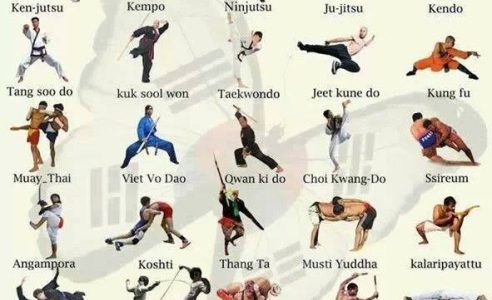The International Trip And Growth Of Martial Arts Throughout History
The International Trip And Growth Of Martial Arts Throughout History
Blog Article
Writer-Sutton Workman
Martial arts have a remarkable history that covers centuries and continents. You could find it interesting how old techniques like Shuai Jiao and Kalaripayattu laid the groundwork for modern fight strategies. These techniques not only emphasize physical skills yet additionally show the cultures that birthed them. As you explore their evolution, take into consideration just how globalization has transformed these typical forms right into crossbreed styles. What Read the Full Article do you think have shaped today's martial arts landscape?
Ancient Martial arts: The Structures of Combat
As you delve into the globe of ancient martial arts, you'll find the rich structures that formed fight techniques throughout societies. Very early methods concentrated on Self-Defense and survival, frequently integrating strikes, grappling, and weapons.
In ancient China, for example, techniques like Shuai Jiao highlighted throws and joint locks, while India's Kalaripayattu showcased dexterity and fluid movement. Japanese samurai created Kenjutsu, a refined swordsmanship that highlighted discipline and strategy.
These martial arts served not just for fight but likewise as a means of personal advancement, instilling values like regard and willpower. The mixing of these methods over time prepared for the diverse martial arts you see today, each mirroring the special ideologies and requirements of its culture.
The Cultural Influence on Martial Arts Development
While martial arts frequently mirror the functional demands of a culture, they additionally embody the cultural values and beliefs of their beginnings. When you discover various martial arts, you'll see just how they're influenced by religious beliefs, viewpoint, and social norms.
For martial arts vs boxing , the emphasis on respect and self-control in Japanese martial arts originates from Zen Buddhism and samurai culture. In contrast, Brazilian Jiu-Jitsu advertises flexibility and approach, shaped by the demand for efficiency in a diverse, modern atmosphere.
You may discover that the rituals, uniforms, and training techniques mirror a community's background and identity. By recognizing these cultural impacts, you strengthen your recognition of martial arts and their function in shaping human experiences across the globe.
Modern Adaptations and the Globalization of Martial arts
Martial arts have actually changed significantly in current decades, adjusting to modern society and international impacts. You'll observe that conventional forms have blended with modern strategies, producing hybrid styles like mixed martial arts. These adjustments satisfy varied target markets, making martial arts obtainable and appealing around the world.
With the increase of social media sites and electronic systems, you can locate tutorials and competitors from all corners of the world, damaging geographical barriers. This globalization has actually led to a common appreciation for various self-controls, from Brazilian Jiu-Jitsu to Taekwondo.
As you engage with these arts, you'll realize they're not just about fight; they advertise fitness, self-control, and mental wellness.
Inevitably, contemporary adaptations have enhanced the martial arts landscape, making it a vibrant and developing technique.
Conclusion
In exploring the background and development of martial arts, you reveal a fascinating mix of methods, societies, and approaches. From ancient disciplines like Shuai Jiao and Kalaripayattu to the modern-day flexibility seen in mixed martial arts, martial arts reflect humankind's quest for Self-Defense and personal development. As you involve with these methods, you not just acquire abilities yet also a deeper admiration for the varied traditions that shape our world today. So, proceed your trip and welcome the art of battle!
